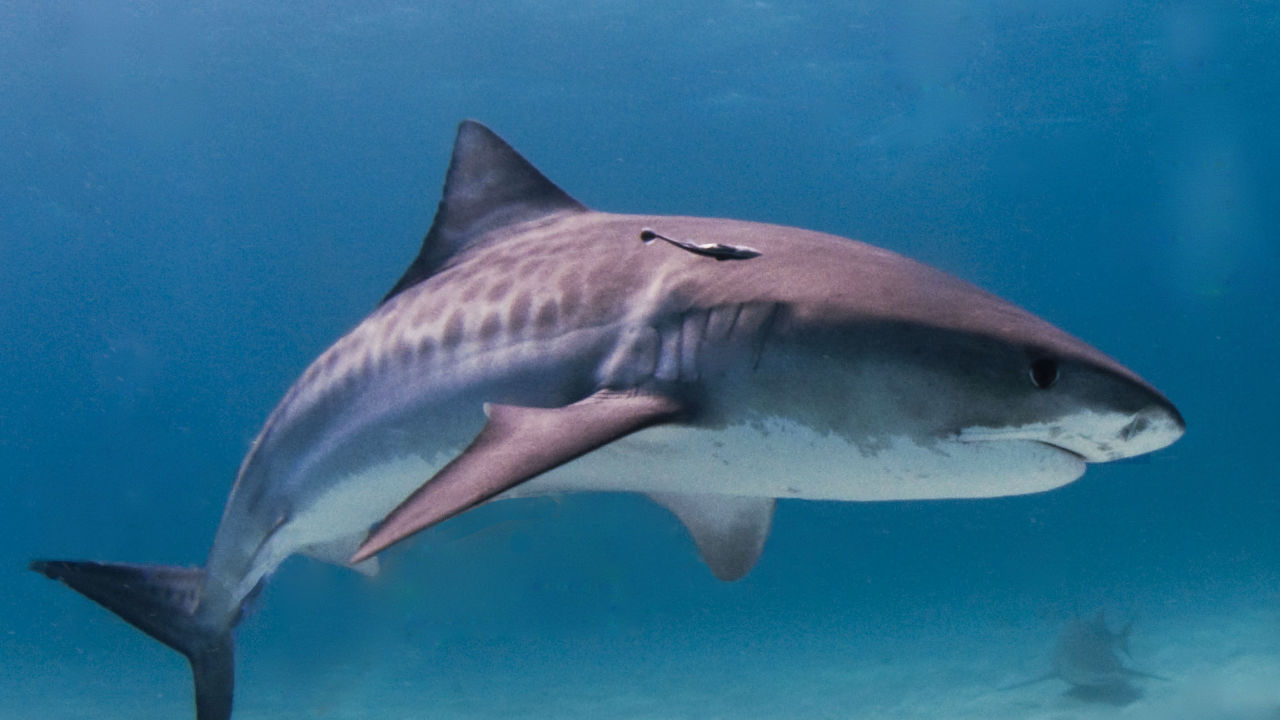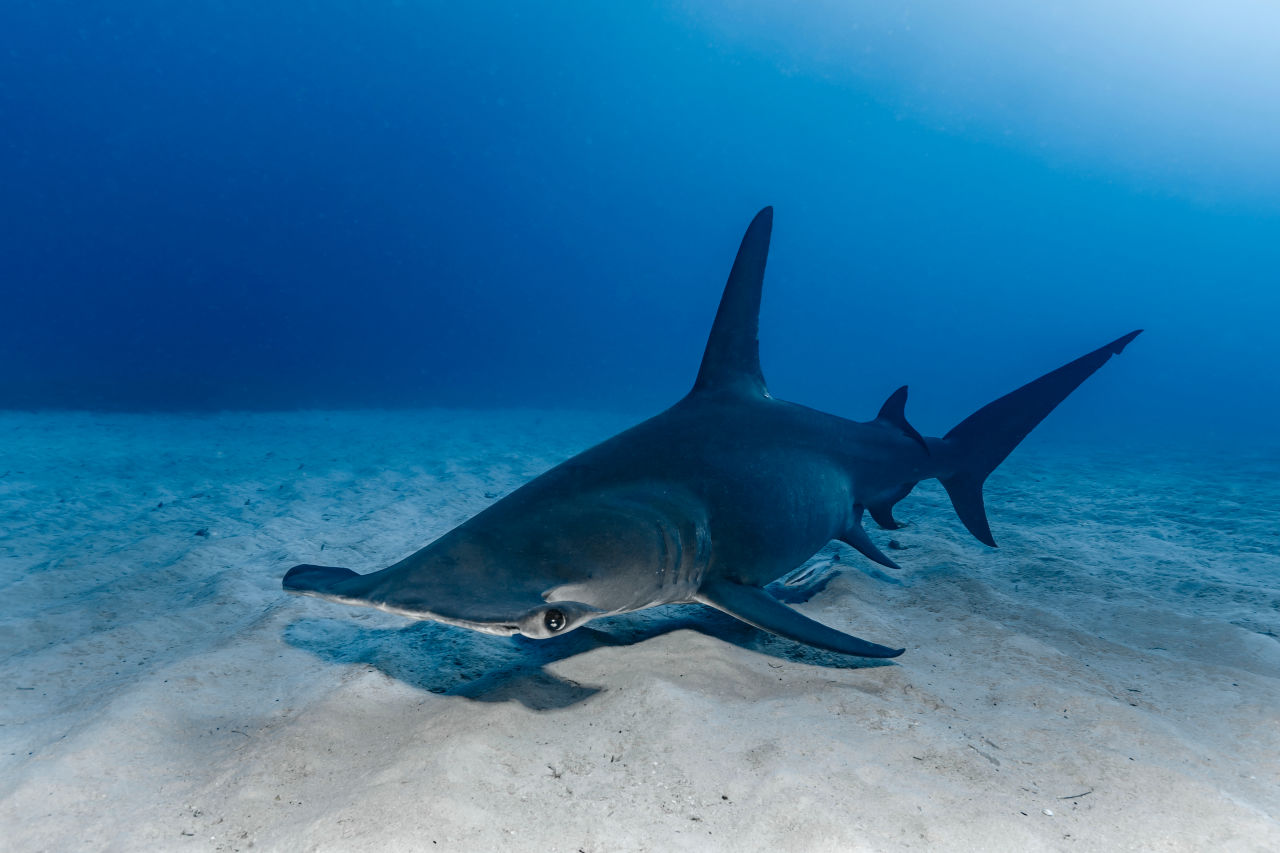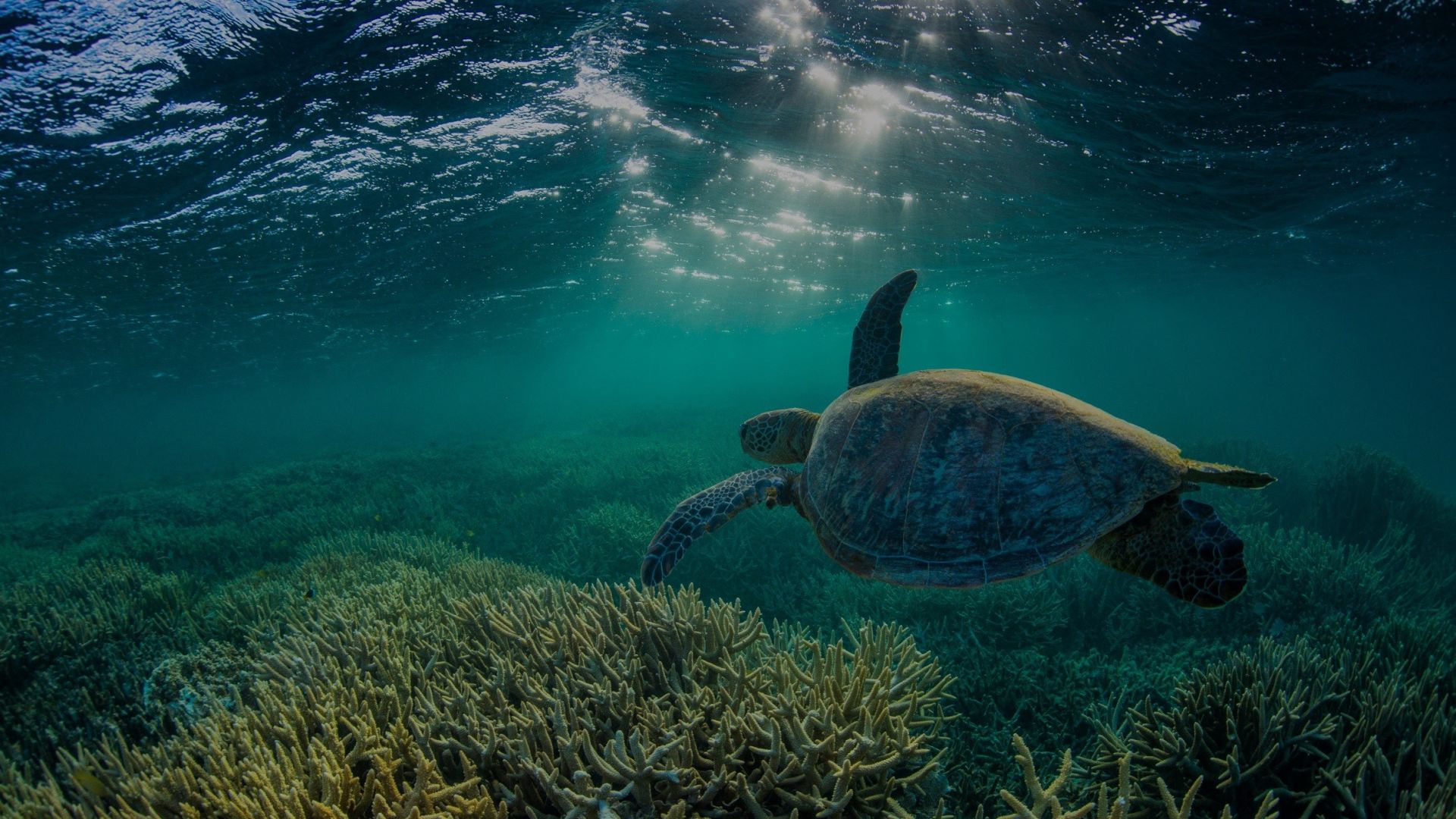Sharks
Sharks are best known as fearsome apex predators, but there's more than meets the eye. With over 500 different species on earth, their survival secrets are astonishing.

#Description
Just like other fish, sharks are cold-blooded, and breathe with gills, but there's one big difference - a shark's skeleton is made of cartilage instead of bone. It's the same stuff that makes up our human noses and ears. Scientists believe that sharks have been around for more than 400 million years—long before the dinosaurs. Over this time, they have evolved to become super swimmers, with a specialised fusiform (rounded and tapering at both ends) body shape that reduces drag and even the ability to sleep on the move. Around 500 species of shark still swim our oceans today, displaying an incredible array of sizes, patterns, colours and behaviours.
#Anatomy
Far from their Hollywood infamy, sharks are evolutionary wonders with unique adaptive superpowers.
Based on fossilized teeth and scales, scientists believe that sharks have been around for more than 400 million years—long before the dinosaurs. The ocean’s top predators have evolved into roughly 500 species that come in all different sizes and colors and have varying diets and behavior.

The Hammerhead Shark is a master of the hunt with its streamlined body, powerful fins and sharp eyesight.
#Shark facts
1.
The tiger shark is the only species in its family that is ovoviviparous, meaning it reproduces by both laying eggs (oviparous) and giving birth to live young (viviparous). They develop eggs inside their bodies, but don’t lay them. Instead, the eggs hatch and continue to develop, taking as long as 16 months before being born as live pups. A female tiger shark can have as many as 80 pups in a litter.
2.
Sharks have a ‘sixth sense’ they use to help find prey. Called the ampullae of Lorenzini, these special pores beneath the skin around the shark’s snout are filled with a jelly-like substance which can detect electric fields. All living beings give off an electric field, so by heading in the direction of the field, the shark can find prey.
3.
Sharks have no bones. In fact, sharks are "elasmobranchs," which means they are made of cartilaginous tissues, similar to human ears and noses. Their cartilaginous skeletons are much lighter than true bone and help them to be more buoyant.
4.
The unusual shape of a tiger shark’s teeth has been likened to the Sydney Opera House sails. This predator's teeth are so strong they can slice through turtle shells with ease. A broken tooth is no problem because the shark will simply grow a new one.
5.
Some species of shark have an infamous appetite. Rats, cats, dogs, sheep, goats and even horses have been found in their stomachs. Sadly, they've also been found to consume far less palatable items including bottles, tyres, nails, balls, clothing, license plates and even explosives.
#Behavior
Sharks exhibit behaviors as unique and diverse in number as their hundreds of species.
Infamous great whites are the active apex predators of colder southern waters, hunting marine mammals and birds like seals and penguins. The gentle, giant basking sharks cruise the open ocean, mouths agape to scoop and filter tiny plankton out of the water. Much smaller and agile reef sharks twist and turn through the corals, searching for a quick a fish supper while their whale shark cousins, who also inhabit reef ecosystems, instead enjoy a meal of tiny crustacean krill.
Few shark species are social, most preferring a solo life on the move. When it does come time to mate and reproduce, the majority of sharks incubate and hatch their eggs internally and then give birth to live young. Some species like the Port Jackson shark lay eggs externally; the shells or casings can often be found washed up on an early morning tide.
#Threats
Sharks may not be a significant threat to us, but we are to them.
A combination of extreme pressures from overfishing and illegal fishing, rising water temperatures and ocean acidification contribute to shrinking shark populations. Coastal development is also destroying shallower ocean habitats like mangroves and coral reefs, which sharks use for breeding and as nurseries to raise their pups. A drop in numbers is bad news for sharks but also for ocean health in general: As top predators of the ocean, sharks are critical for ensuring a balanced food web.
#IUCN Red List status
Many species of shark including the Great White Shark, Whaleshark, Hammerhead Shark, Bullshark, Zebra Shark, Basking Shark and Greenland Shark are listed as vulnerable or endangered on the International Union for Conservation of Nature’s Red List of Threatened Species.
VU/EN
Vulnerable/Endangered

#Help her survive the heat
The Great Barrier Reef is fighting for life and we are fighting for her future.
